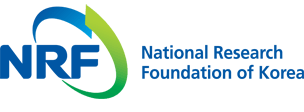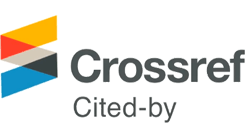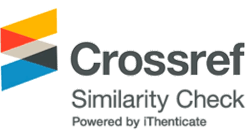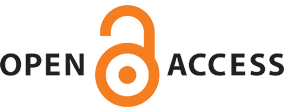Article
Almashhour R., AlQahtani M., Ndiaye M. (2023), Highway Transportation, Health, and Social Equity: A Delphi-ANP Approach to Sustainable Transport Planning, Sustanability, 15(22), 16084.
10.3390/su152216084Batarce M., Muñoz J. C., de Dios Ortúzar J., Raveau S., Mojica C., Flores R. A. R. (2015), Evaluation of passenger comfort in bus rapid transit systems.
10.18235/0009244Bertsimas D., Ng Y. S., Yan J. (2021), Data-driven transit network design at scale, Operations Research, 69(4), 1118-1133.
10.1287/opre.2020.2057Chakroborty P. (2003), Genetic algorithms for optimal urban transit network design, Computer-Aided Civil and Infrastructure Engineering, 18(3), 184-200.
10.1111/1467-8667.00309Dalkey N., Helmer O. (1963), An experimental application of the Delphi method to the use of experts, Management science, 9(3), 458-467.
10.1287/mnsc.9.3.458Dingil A. E., Rupi F., Stasiskiene Z. (2019), A macroscopic analysis of transport networks: The influence of network design on urban transportation performance, International Journal of Transport Development and Integration, 3(4), 331-343.
10.2495/TDI-V3-N4-331-343Dou X., Yan Y., Guo X., Gong X. (2016), Time control point strategy coupled with transfer coordination in bus schedule design, Journal of Advanced Transportation, 50(7), 1336-1351.
10.1002/atr.1404Durán-Micco J., Vansteenwegen P. (2022), A survey on the transit network design and frequency setting problem, Public transport, 14(1), 155-190.
10.1007/s12469-021-00284-yFan W., Machemehl R. B. (2011), Bi-level optimization model for public transportation network redesign problem: Accounting for equity issues, Transportation Research Record, 2263(1), 151-162.
10.3141/2263-17Feng X., Zhu X., Qian X., Jie Y., Ma F., Niu X. (2019), A new transit network design study in consideration of transfer time composition, Transportation Research Part D: Transport and Environment, 66, 85-94.
10.1016/j.trd.2018.03.019Hirschhorn F., Veeneman W., van de Velde D. (2018), Inventory and rating of performance indicators and organisational features in metropolitan public transport: A worldwide Delphi survey, Research in Transportation Economics, 69, 144-156.
10.1016/j.retrec.2018.02.003Hsu C. C., Sandford B. A. (2007), The Delphi technique: making sense of consensus, Practical assessment, research, and evaluation, 12(1).
Huang J., Levinson D. M. (2015), Circuity in urban transit networks, Journal of Transport Geography, 48, 145-153.
10.1016/j.jtrangeo.2015.09.004Jha S. B., Jha J. K., Tiwari M. K. (2019), A multi-objective meta-heuristic approach for transit network design and frequency setting problem in a bus transit system, Computers & Industrial Engineering, 130, 166-186.
10.1016/j.cie.2019.02.025Jing W., Xu X., Pu Y. (2019), Route Redundancy‐Based Network Topology Measure of Metro Networks, Journal of Advanced Transportation, 2019(1), 4576961.
10.1155/2019/4576961Joung J., Shim S., Kim M. (2022), A Study on Introducing Autonomous Public Transportation On-demand Service in Real Time Using Delphi Method, J. Korean Soc. Intell. Transp. Syst., 21(5), 183-196.
10.12815/kits.2022.21.5.183Kang Y. (2008), Understanding and Application Cases of the Delphi Method, Employment Development Institute of Korea Employment Agency for Persons with Disabilities.
Kim B., Yoon J. (2024), A Study on the Changes of Road Design and Operation in the Age of Autonomous Driving, Using Delphi Technique, J. Korean Soc. Intell. Transp. Syst., 23(3), 80-96.
10.12815/kits.2024.23.3.80Kim M., Kho S. Y., Kim D. K. (2019), A transit route network design problem considering equity, Sustainability, 11(13), 3527.
10.3390/su11133527Lawshe C.H. (1975), A quantitative approach to content validity, Personeel psychology, 28(4), 563-575.
10.1111/j.1744-6570.1975.tb01393.xLee S., Kim S., Kim W., Kim S., Lee C., Park J., Choi S., Sung K. (2010), A Study on the Public Transportation Service Index Development (2nd Phase), The Seoul Institute.
Lee S., Park K. (2003), Quantative Evaluation Indicators for the City Bus Route Network, J. Korean Society of Transportation, 21(4), Korean Society of Transportation, 29-44.
Liu Y., Zhang H., Xu T., Chen Y. (2022), A Heuristic Algorithm Based on Travel Demand for Transit Network Design, Sustainability, 14(17), 11097.
10.3390/su141711097Mauttone A., Urquhart M. E. (2009), A route set construction algorithm for the transit network design problem, Computers & Operations Research, 36(8), 2440-2449.
10.1016/j.cor.2008.09.014Park J., Kim G., Go S., Jung D., Moon J. (2017), Analysis on the Curvature of the Long Distance City Bus Routes Operating in Metropolitan Areas, The Korea Transportation Institute.
Park S. J., Kang S., Byon Y. J., Kho S. Y. (2022), Multiobjective approach to the transit network design problem with variable demand considering transit equity, Journal of Advanced Transportation, 2022(1), 5887985.
10.1155/2022/5887985Raveau S., Muñoz J. C., De Grange L. (2011), A topological route choice model for metro, Transportation Research Part A: Policy and Practice, 45(2), 138-147.
10.1016/j.tra.2010.12.004Shen X., Feng S., Li Z., Hu B. (2016), Analysis of bus passenger comfort perception based on passenger load factor and in-vehicle time, SpringerPlus, 5, 1-10.
10.1186/s40064-016-1694-726839755PMC4722046Shiftan Y., Kaplan S., Hakkert S. (2004), Scenario building for the future of the Tel Aviv metropolitan area and its transportation system using the Delphi method, In Transport Developments and Innovations in an Evolving World, 275-292, Berlin, Heidelberg: Springer Berlin Heidelberg.
10.1007/978-3-540-24827-9_14Sivakumaran K., Li Y., Cassidy M. J., Madanat S. (2012), Cost-saving properties of schedule coordination in a simple trunk-and-feeder transit system, Transportation Research Part A: Policy and Practice, 46(1), 131-139.
10.1016/j.tra.2011.09.013Szeto W. Y., Jiang Y. (2014), Transit route and frequency design: Bi-level modeling and hybrid artificial bee colony algorithm approach, Transportation Research Part B: Methodological, 67, 235-263.
10.1016/j.trb.2014.05.008Tirachini A., Hensher D. A., Rose J. M. (2013), Crowding in public transport systems: effects on users, operation and implications for the estimation of demand, Transportation research part A: policy and practice, 53, 36-52.
10.1016/j.tra.2013.06.005Whelan G., Crockett J. (2009), An investigation of the willingness to pay to reduce rail overcrowding, In Proceedings of the first International Conference on Choice Modelling, Harrogate, England, 30.
Yu B., Yang Z. Z., Jin P. H., Wu S. H., Yao B. Z. (2012), Transit route network design-maximizing direct and transfer demand density, Transportation Research Part C: Emerging Technologies, 22, 58-75.
10.1016/j.trc.2011.12.003Yu B., Yang Z., Cheng C., Liu C. (2005), Optimizing bus transit network with parallel ant colony algorithm, In Proceedings of the Eastern Asia Society for Transportation Studies, 5(1), 374-389, Seattle, WA, USA: Semantic Scholar.
- Publisher :Korean Society of Transportation
- Publisher(Ko) :대한교통학회
- Journal Title :Journal of Korean Society of Transportation
- Journal Title(Ko) :대한교통학회지
- Volume : 43
- No :1
- Pages :92-108
- Received Date : 2024-11-27
- Revised Date : 2024-12-15
- Accepted Date : 2024-12-23
- DOI :https://doi.org/10.7470/jkst.2025.43.1.092



 Journal of Korean Society of Transportation
Journal of Korean Society of Transportation







